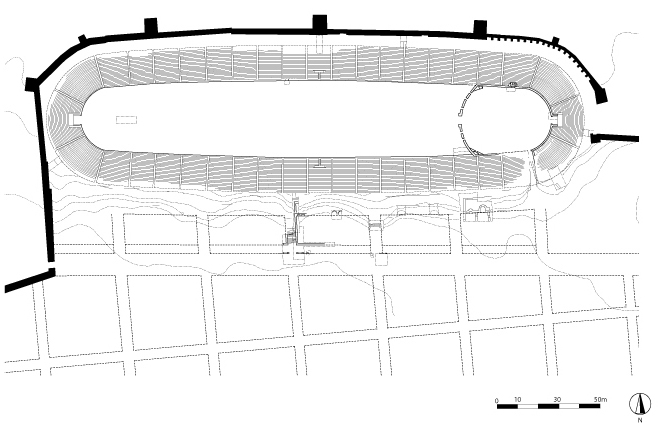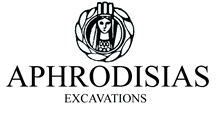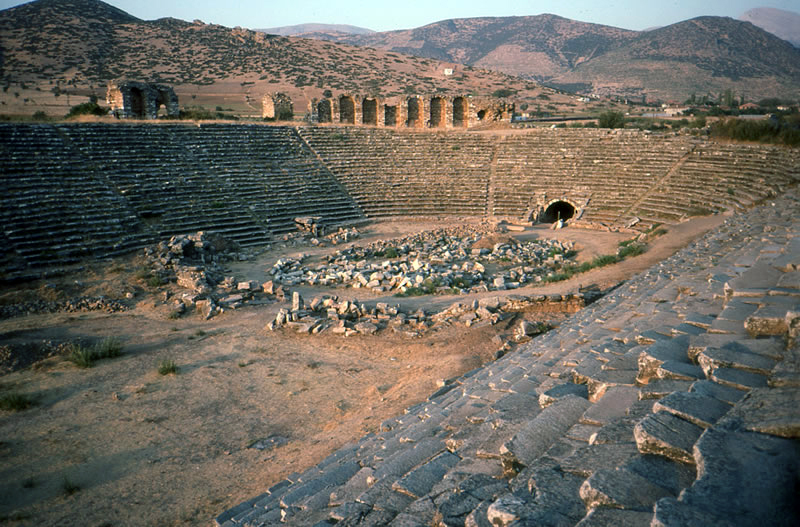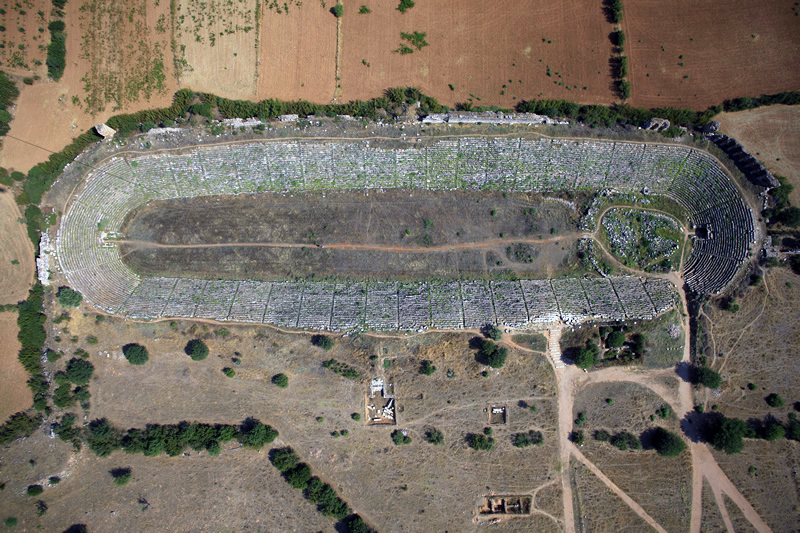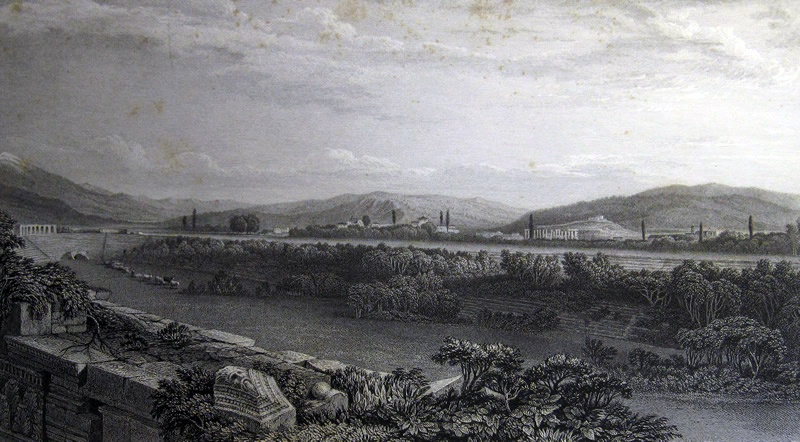Stadium
The Stadium was built in the later first century AD and with the Theatre completed the town’s need for large-capacity spectator buildings. Unusually for a Greek stadium, it is closed at both ends. It measures c. 270 X 60 m, and has thirty tiers of marble seats. Its capacity was c. 30,000. The long sides are slightly elliptical – a refinement perhaps intended to improve the spectators’ view. Spectators entered the stadium by monumental stairways on the south side, facing the town; these stairs aligned with north-south streets in the city grid. That is, the Stadium was carefully planned as an integral part of the city (see Stadium plan, below). Competitors entered through tunnels under the seating on both short ends. The Aphrodisias Stadium is the best preserved of all ancient Greek stadia and also one of the largest.
The Stadium accommodated traditional Greek athletic contests, such as foot races, long-jumping, wrestling, discus, and javelin throwing. It was also used for gladiatorial combats and wild-beast fights that were part of the regular programme of festivals held in honour of the Roman emperors. In late antiquity, when the traditional Greek games and naked athletics had declined in importance, the east end of the building was turned into an amphitheatre and arena specifically designed for Roman-style entertainments of this kind. Recent investigation has shown that this conversion was made in the later fifth century. The seating preserves a fascinating body of ‘place’ (topos) inscriptions carved on the marble seats, reserving space for various groups (such as the associations of tanners and goldsmiths) and for wealthy individuals (men and women) both from Aphrodisias and from nearby communities such as Antioch on the Meander. The spectators mapped out their social and political affiliations on the seats of this great public gathering place.
